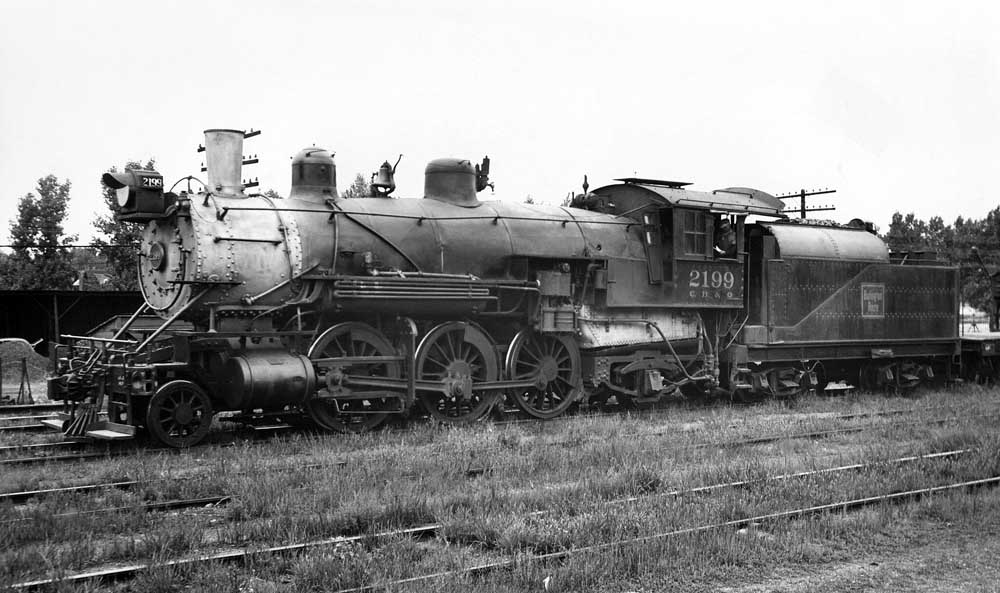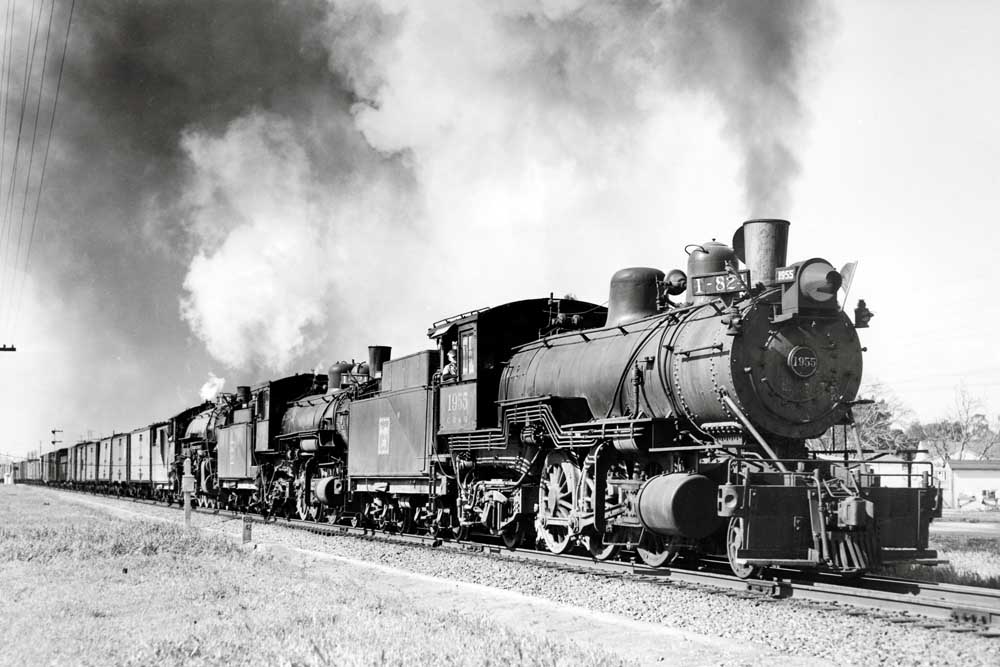Unsurprisingly, the largest 2-6-2 Prairie fleet operated on the U.S. prairies with the railroad that originated the type.

As the railroad industry approached the late 19th century, it became obvious that what had been considered the preferred locomotive — the 4-4-0 American — could no longer provide the horsepower nor the speed necessary to meet the demands for faster passenger trains and heavier freights. Thus came the 2-8-0 Consolidation, the 2-6-0 Mogul, and the 4-4-2 Atlantic, all of which could briefly be called standard engines in the years leading up to the turn of the century. But the need for even higher performance was unrelenting, and that led to the 2-6-2.
Chicago, Burlington & Quincy originated the 2-6-2 in 1900, basically enlarging its own 2-4-2 design in a bid to create an engine that could do a better job than a 2-8-hauling freight on faster schedules. The Burlington went on to field by far the largest 2-6-2 Prairie fleet: 429 locomotives! Called the “Prairie” for its association with CB&Q’s granger operations across Illinois, Iowa, and eastern Colorado (a nickname also adopted by Santa Fe for the same reasons), the new wheel arrangement was an upgrade from the 2-6-0 in that it brought the firebox above the frame, therefore allowing it to offer an expanded grate area. That latter improvement was especially important given the Burlington’s need to use semi-bituminous coal available west of Burlington, Iowa; this western coal produced less BTUs than the Illinois coal CB&Q generally used to the east. The first four Prairies even utilized a square-cornered Belpaire firebox, although that approach appears to have been discarded later.
Alas, the Prairie had an Achilles heel: a tendency to display ride instability — laterally and vertically — in larger examples of the wheel arrangement, which restricted its development. As steam scholar and author William L. Withuhn noted in his book American Steam Locomotives: Design and Development, 1880-1960, the problem was rooted in the 2-6-2’s symmetry of weight distribution and piston thrust on the middle drivers. Wrote Withuhn: “Since the center of gravity of the whole locomotive was very close to the main crankpin, piston thrust exerted maximum leverage around the engine’s vertical axis. This action could produce a side-to-side yawing. … And apart from the lateral yaw, Prairies sometimes pitched like a hobby horse and derailed.” Thus was the Prairie’s relatively brief time in the limelight.

The Burlington built the first four 2-6-2s in the R-1 class at its own West Burlington (Iowa) Shops, but most of the subsequent 424 engines were built by Baldwin, with a smaller group coming from Brooks. The largest 2-6-2 Prairie fleet encompassed seven classes on CB&Q, R-1 through R-7, the final 175 coming in 1906-1907. Many the Burlington’s Prairies were later rebuilt to 0-6-0 switchers, enabling them to remain in service until the early 1950s.
Other notable railroads with 2-6-2s included Santa Fe, which boasted the heaviest at 248,200 pounds per engine; Milwaukee Road, which received the last 2-6-2 from Brooks in 1909; and New York Central subsidiary Lake Shore & Michigan Southern, which had a roster of 46 J-40D-class passenger Prairies boasting 81-inch drivers. The last Class I railroad to operate 2-6-2s was Northern Pacific, which had some in service in 1959.














Did SP convert them to oil firing?
I’m guessing that the Prairie’s “achilles heel” also applied to the Columbia, to some extent anyway.